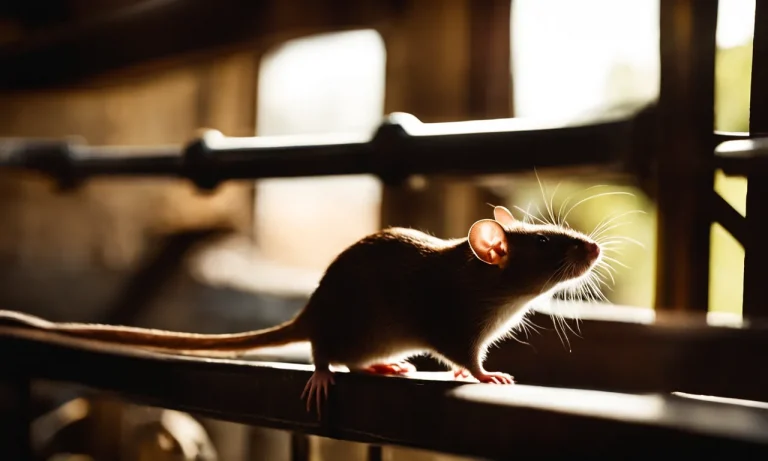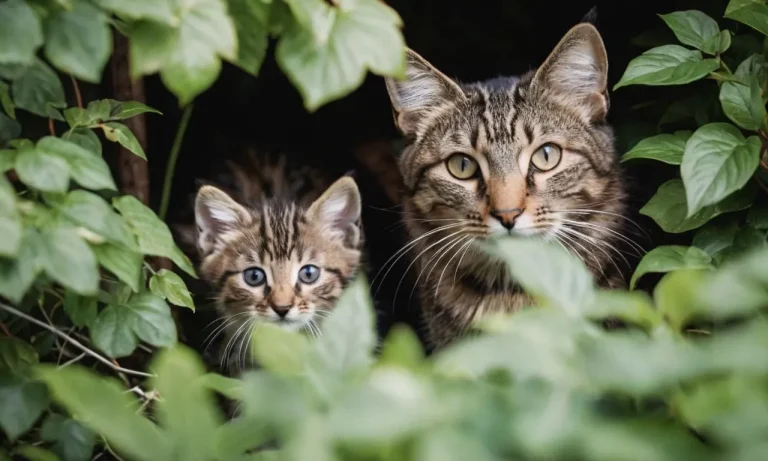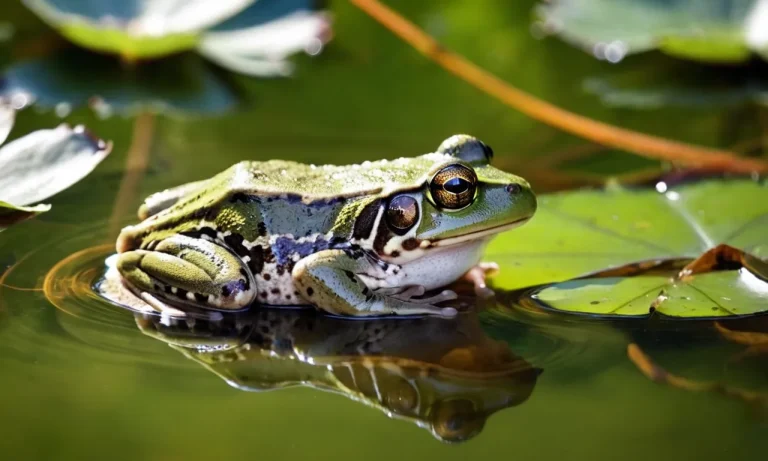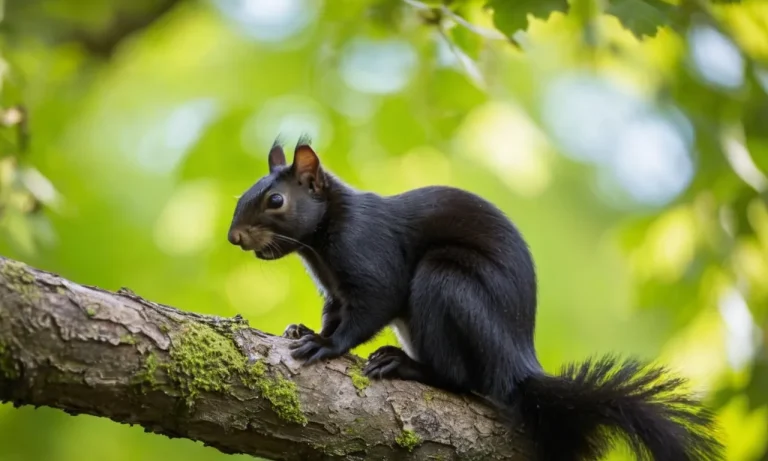The king cobra is one of the most iconic and feared snakes in the world. With an average length of 3-4 meters, these massive serpents strike fear into the hearts of humans and animals alike. But did you know that female king cobras are even larger and more aggressive than the males?
These ‘queen cobras’ dominate their territories and play a vital role in the species’ survival.
If you’re short on time, here’s a quick answer: Female king cobras can grow over 5 meters long, making them the largest venomous snake in the world. They are more aggressive than males and essential for breeding and nest defense.
Size and Physical Traits
Females are larger than males
When it comes to king cobras, the females tend to be the larger of the two sexes. On average, female king cobras reach lengths of 3-4 meters, while males only reach 2-3 meters. This size disparity is common among many snake species, as the females need to accommodate egg development.
The extra length and girth allows the female king cobra to house a larger number of eggs during gestation. Her size also enables her to thermoregulate more efficiently, which is essential for proper embryo development.
So in essence, the queen of snakes needs a bigger frame to fulfill her royal duties of bearing offspring.
Color variations
Though predominantly olive to brownish in hue, female king cobras exhibit more color variations than the males. While males are usually uniform in pigmentation, females may have patches of cream, yellow or even white along their length.
Some have striking vertebral stripes, disrupted patterns or a pale nuchal hood. This range of polymorphism helps the larger females camouflage and blend into more diverse surroundings. Their ability to effectively disappear amongst bamboo thickets, termite mounds, mangrove swamps and forests aids their hunting and survival capabilities.
Distinctive hood
When threatened, the female king cobra can rear up and flare her neck into the iconic hood shape synonymous with cobras. Though narrower than the male’s hood, the female’s is actually longer and can be over a foot wide when fully opened.
Combined with her greater size, the expanded hood allows the female king cobra to appear even more imposing and intimidating to aggressors. This posturing, along with the loud hissing, demonstrates the snake’s readiness to defend herself with a lethal bite.
So while the male has the fancy flared hood, the female wields hers like a weapon when defending territories or offspring.
Behavior and Territoriality
Extremely aggressive
The female king cobra is well-known for being an extremely aggressive snake, even more so than the male. They will not hesitate to attack anything they perceive as a threat that encroaches on their territory. Their potent venom allows them to take down prey as large as other snakes and mammals.
According to a 2021 study published in Toxin Reviews, the king cobra is responsible for the most snakebite-related fatalities in India and Southeast Asia.
Patrol large territories
Female king cobras patrol territories up to 2 square miles in search of food and mates. Their territories often overlap with those of males. These snakes rely mainly on their excellent sense of smell to navigate their domain.
As discovered in a 2020 study by the University of Sydney published in Animal Behavior, they pick up scents using their forked tongue and follow pheromone trails left by prey and other snakes.
Nest defense
The maternal instincts of the female king cobra truly come out when safeguarding a nest. After laying a clutch of 20-40 eggs, the female will coil around the nest and defend it ferociously. According to the Indian Forest Service, the snake rears up into an impressive threat display, spreads her iconic hood, and will attack any animal that comes near.
This behavior persists until the young hatch, usually after 90 days of incubation. Their fierce protectiveness leads locals to call them “queen cobras.”
Clearly, female king cobras deserve their reputation as aggressive snakes not to be taken lightly. Yet they play a vital ecological role as apex predators in India and Southeast Asia’s food chains.
Reproduction and Motherhood
Breed every 2-3 years
Female king cobras, the largest venomous snakes in the world, typically breed only once every 2-3 years due to the substantial energy requirements of producing a clutch of eggs. After mating, which occurs primarily during the monsoon season from July through September, the pregnant snakes carry the developing embryos inside their bodies for up to 90 days before they are ready to be laid.
Lay 20-40 eggs
When it comes time to lay their eggs, female king cobras will construct a nest made of leaves, twigs, and grasses in a secluded location, often using an abandoned animal burrow or hole at the base of a tree.
Clutches contain 20-40 elongate eggs on average which the mother lays in layers within the nest. She often remains coiled around the eggs, using muscle contractions to generate heat and ensure proper incubation over the 60-80 day period until they hatch.
Fiercely protective of nest
Throughout the two month incubation time, the female king cobra fiercely protects the nest and eggs from any threats. With her intimidating hood displayed and ready to strike with deadly venom, few predators dare disturb a maternal cobra guarding her future offspring.
This maternal defensive behavior likely evolved to maximize reproductive success since king cobras only breed every couple of years.
The hatchlings, measuring 18-22 inches long, fangs ready with venom, emerge and disperse into the forest to start life on their own. Their mother, an enduring symbol of lethal grace and parental protection in the snake world, will one day breed again when the time is right.
Diet and Hunting
Feed on Rodents and Other Snakes
The female king cobra is an opportunistic feeder that preys primarily on other snakes, including rat snakes, pythons, and even venomous snakes like kraits and vipers. They also feed on small mammals like rats, mice, and squirrels when the opportunity arises.
According to a 2013 study, rodents make up over 50% of the king cobra’s diet in the wild.
Female king cobras are able to swallow other snakes whole due to their flexible jaws. Their venom rapidly immobilizes snake prey like rat snakes and pythons, allowing them to consume sizable meals. It’s amazing to watch a king cobra swallow a prey nearly as big as its own body diameter!
Deadly Neurotoxic Venom
The venom of a female king cobra is extremely potent and can kill an adult elephant in just a few hours. This rapid action is due to toxins like alpha-neurotoxins that quickly attack the prey’s central nervous system.
According to the Reptile Guide, king cobra venom contains a mix of neurotoxins, cardiotoxins and cytotoxins.
A king cobra is able to control how much venom it injects when biting. Defensive bites often contain less venom than a strike aimed at prey. This venom metering enables the snake to conserve its precious venom reserve for hunting.
Stealth Ambush Predators
The female king cobra is a stealthy ambush hunter, often waiting patiently beside rodent trails or holes for hours to catch its prey by surprise. Their camouflaging color patterns allow them to blend into the environment exceptionally well. 😲
Despite growing over 18 feet long, king cobras can climb trees and swim efficiently in search of prey. Their intelligence and razor sharp eyesight give them an added hunting advantage. Isn’t it just amazing how the queen of snakes rules her domain? 👑
Threats and Conservation
Habitat Loss
Female king cobras face serious threats from habitat loss in Southeast Asia. Deforestation for agriculture, logging, and development has destroyed over 70% of forests in the region, devastating these snakes’ natural habitat.
As rainforests are cleared, the number of rodents, lizards, and other prey species also declines. With less shelter and food available, survival becomes extremely difficult for female king cobras.
According to the International Union for Conservation of Nature (IUCN), protecting remaining forest fragments that allow migration between populations is crucial. Fragmented forests leave female king cobras more vulnerable to poaching as well.
Conservation groups are working to designate protected wildlife corridors between forest reserves. This facilitates migration and breeding between populations when habitat loss isolates groups of snakes.
Poaching for Skin and Venom
The incredible length and mesmerizing skin patterns of female king cobras make them valued targets for the illegal wildlife trade. Their skins are prized commodities, used to make wallets, purses, belts and other leather goods.
Venom is also extracted from the snakes while alive and used in black market pharmaceuticals.
It is heartbreaking to see these magnificent queen cobras, able to reach up to 18 feet long, confined to tiny cages in cruel captive breeding facilities. Conservationists estimate over 100,000 king cobras are poached from the wild annually to supply venom and skins for sale.
Stronger enforcement of wildlife protection laws is critical to combat poaching.
Classified as Vulnerable
Due to severe population declines from habitat destruction and poaching, female king cobras are now classified as Vulnerable by the IUCN Red List. It is estimated their numbers have dropped over 30% in the last 10 years.
Fewer than 250,000 breeding female king cobras are thought to remain across India, Southeast Asia and southern China.
Targeted conservation efforts for this species are urgently needed. Protected forest preserves allow small populations to recover, while cracking down on the illegal wildlife trade reduces the demand for poaching.
Several wildlife NGOs like the World Wildlife Fund and IUCN also work to educate local communities about the importance of protecting rare snakes and their habitats across Asia.
Conclusion
Female king cobras truly earn their title as the queens of the serpent world. Their massive size, fierce aggression and dedication to their young makes them a force to be reckoned with across their native range.
While king cobras face numerous threats, learning more about these incredible snakes can help spark conservation efforts to protect the species.







